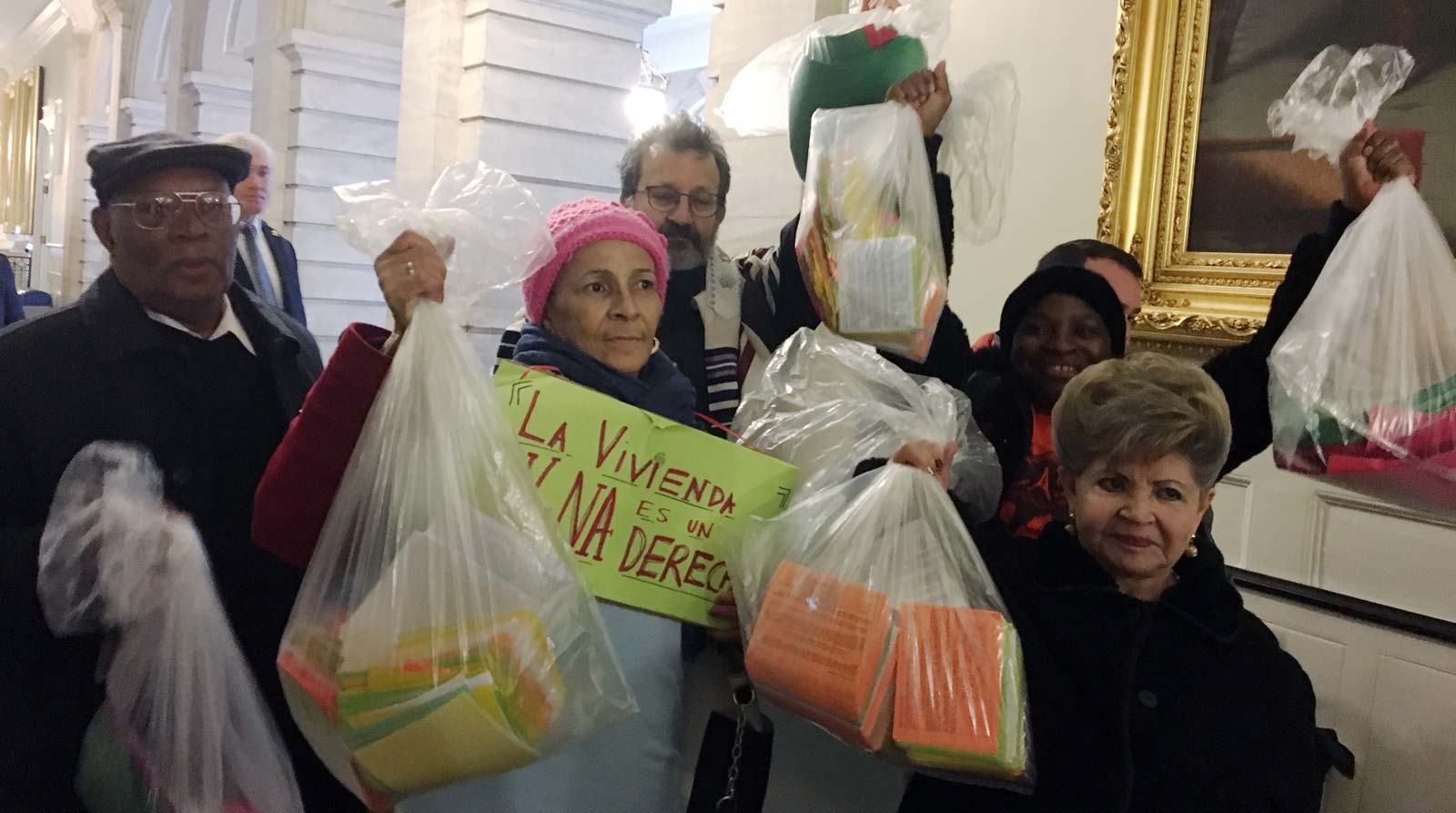
We tried to be strategic about when to apply public pressure. Before launching the very public aspects of our campaign, we used the tools that precede this section: we built our case through fact sheets and forums, we conducted outreach and recruited allies, produced a cost/benefit analysis, created videos and other materials, collected signatures and endorsements, and much more, all to help build a large base of support. We waited until we had a lot in place, until we were “getting to yes” and building momentum before we held the hearing on the legislation and other public pressure tactics. This section of the toolkit provides you with tools that worked well for us, and examples for use in the more public stages of your campaign.
Included are:
- Hearings: Examples from our campaign’s hearings, including agendas, a flyer and a tool to help you prepare for giving testimony at a hearing.
- Press Conferences: Includes example agendas.
Hearings
Holding a hearing is an effective way to not only garner publicity for your campaign but to sway elected officials who are still undecided on the issue. The hearing was a real watershed moment in the campaign for us. We mobilized tirelessly for this event and worked hard to have a diverse set of people and organizations to testify, including human rights groups, nonprofit landlords, youth advocates, labor unions, disability advocates, senior advocates, etc. Before the hearing, we held a huge press conference and mobilized to make sure that we had a strong social media and physical presence throughout the eight hour hearing. On the day of our hearing, our hashtag #RTCNYC trended on Twitter!
Included here:
- Hearing Planning Spreadsheet: We created a spreadsheet to coordinate the hearing and testimony logistics. Your hearing may have different components but we hope that this can serve as a template and help generate ideas.
- Preparing Testimony for Right to Counsel Hearings: Testimony is a crucial part of holding effective hearings. We offer tips and guidance on how to craft succinct key point and prepare powerful narratives.
- Sample Flyer: This can be used as a guide to create your own. It includes the event logistics as well as our website address, for those that may not have been familiar with the issue
Hearing Planning Spreadsheet
Planning our hearing required coordinating a lot of moving pieces: multiple organizations and speakers, speeches and testimony, timing, press and other logistics. We had a lot of information and notes to keep track of, and we’re including the spreadsheet here that helped us stay on track during the planning phase. We’ve removed names and data, but kept the categories of speakers, organizations and tabs that correspond to the different elements of the agenda. This style of organization worked well for us, and we hope that it does for you, and that it inspires an engaging and powerful hearing!
Hearing Flyer
Creating and disseminating flyers is an invaluable way to spread the word about events. Not only do flyers reach masses in person, but they can be used digitally to reach an even wider audience. Because flyers are meant to capture key ideas in a succinct manner, we made sure to only provide the messaging that we felt would “grab” the audience. This flyer for our public hearing includes key messaging as well as the fact that food and transportation would be provided, which was a principle that we always adhered to. We invite you to use this flyer to model your own.
Press Conferences
We held many press conferences throughout the campaign! We planned press conferences to correspond with highly public actions, like delivering bags of postcards in support of Right to Counsel. Organizing these events was a way for us to control the messaging and narrative about the Right to Counsel as well as to build energy and support for RTC. One of our goals was to have a constant “buzz” about Right to Counsel, so that lawmakers were constantly hearing about it. It’s also important to note that we always had tenant leaders either MC the press conferences or co-MC them with elected officials. We wanted to make sure that it was clear to the press and to the public that the coalition is ultimately accountable to tenant leaders. Some key things to consider when planning press conferences include date and time, location, participants, speakers and press contacts.
Included are:
- Press Conference Agenda: This is a very basic outline of a press conference.
- Postcard Delivery Press Conference Agenda: This is a more detailed outline of a press conference–it’s part-script, part-agenda, and part planning document!
- Questions to Ask about RTC to Key Lawmakers at Public Events: Includes the strategic questions we asked the Mayor of NYC in order to get him to publicly share his position on right to counsel.
- Sample Chants: We’ve included some sample chants, to help build energy and demonstrate unity!
Postcard Delivery Press Conference
The postcard delivery event was an exciting moment for the coalition. We collected hundreds of postcards in support of right to counsel (see the Legislation and Lobbying section for a sample of the postcard) and delivered them to Manhattan Housing Court in clear plastic bags for a strong visual effect. The agenda for the postcard delivery press conference was packed with faith leaders, tenant leaders speaking in multiple languages, chants to rally the crows, visuals and instructions for messaging. With both internal and external instructions, it’s a good example for how to organize an exciting event.
